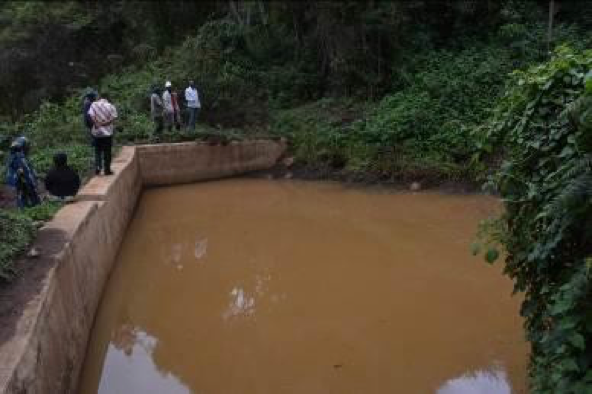Use of traditional Ndivas in Tanzania

Summary
In Same district, located in the Makanya Basin in Tanzania, farmers have been using a traditional irrigation technique known as Ndiva, a local word meaning micro-dam. This water harvesting technology has been in use since the 18th century, but agrarian communities in the district continue to improve it to capture water to irrigate their farms during dry spells and to adapt to current challenges.
Most farmers in the United Republic of Tanzania have traditionally relied on rain-fed agriculture, which can be a problem when rainfall is unreliable or provides insufficient water to farms. Water scarcity caused by frequent dry spells, mixed with increasing demand for water resources due to a rapidly growing population, is particularly challenging in the highland areas of the Kilimanjaro region. Climate change is increasing the unpredictability of precipitation patterns, thus causing further concerns for smallholder farmers. The Same district in the northern highlands, which consists of agrarian communities that grow several crops, including maize, beans and vegetables like brassica and Amaranthus, is one of the main affected areas.
This adaptation solution consists in the construction of Ndivas by excavating the soil to create a reservoir of the desired size. The micro dams vary in size depending on many factors including the area of the farms to irrigate, the number of farmers that will use the reservoir and the human capacities available. These human-made water reservoirs normally range from 200 cubic metres to 1,600 cubic metres. Ndivas are located adjacent to the farms on a raised area where they can collect water and allow it to flow to the gardens once the conveyance canals have been constructed. In some cases, concrete material is used to create reservoirs. On average, the canals can carry water to crops over a distance of 500 metres but can also reach 3,000 metres. The challenge is that water loss occurs through seepage when the water travels over longer distances. To address this issue, the farmers create stone pavements in the canal.
The Ndiva system can serve more than one farm and some community members establish their system as a group. As the system is easy to manage, working in groups is a viable opportunity as the workload can be shared. In a group-owned system, the members irrigate their gardens in turn.
Overview
- Location:
- Implementation sites:
- Single country
- Single location
- Mountain region:
- South Pare Mountains, Same District, Kilimanjaro region
- Solution scale:
- Ecosystem type(s):
- Solution type(s):
- Sector(s):
- Climate impact(s) addressed:
- Impact time-scales:
- Co-benefits:
- Implementation timeline:
- 2022 - 2022
Solution details
Main beneficiaries & outcomes
Farmers in the communities of the Same district have been able to increase crop productivity through the implementation of this solution. For example, maize production has increased seasonally from an average half ton to about 2 tons per acre. With increased production, community members have food security and improved earnings from crop farming. Working in groups also strengthens solidarity within the communities. The solution has also reduced conflict between the crop farmers and the cattle keepers, which previously resulted from competition over scarce water resources.
Planning and implementation
The solutions are supported by the local authorities under the District Agricultural Development Plans.
Finance
The community groups are solely responsible for the ndiva system in terms of construction and maintenance. The local governments make contributions through the district agricultural development plans to support the communities but largely the groups in the communities meet the huge cost in terms of providing labour.
Innovation
The farmers use the local knowledge and skills to reserve water for irrigating their farms.




(0) Comments
There is no content